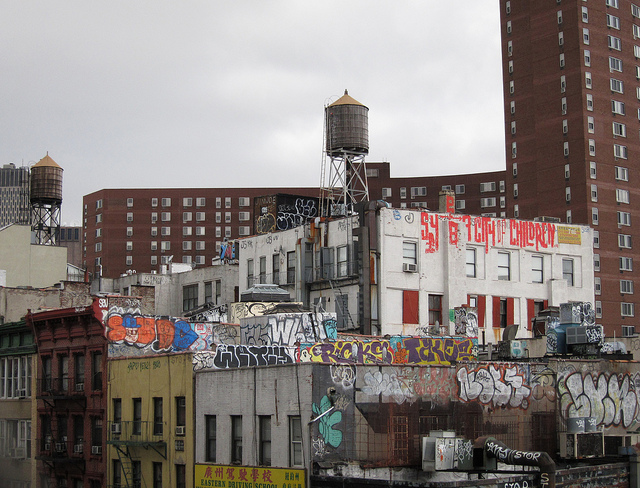
Cash4 show opening tomorrow called “Cash For” from 6pm-10pm at Tender Trap (245 South 1st St., Brooklyn, New York 11211).
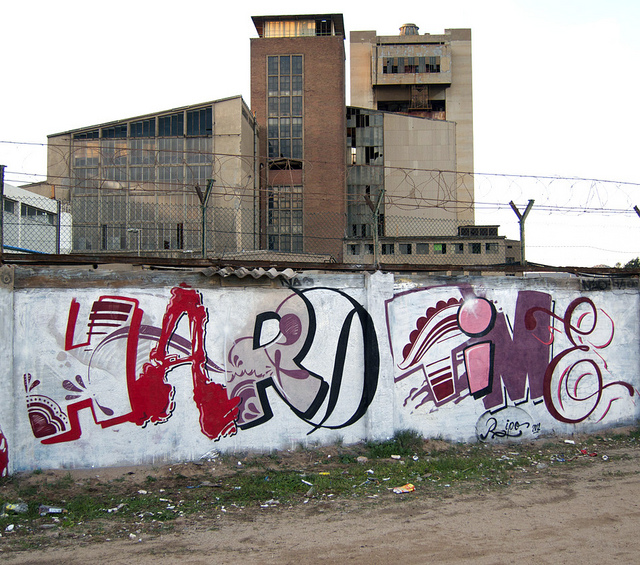
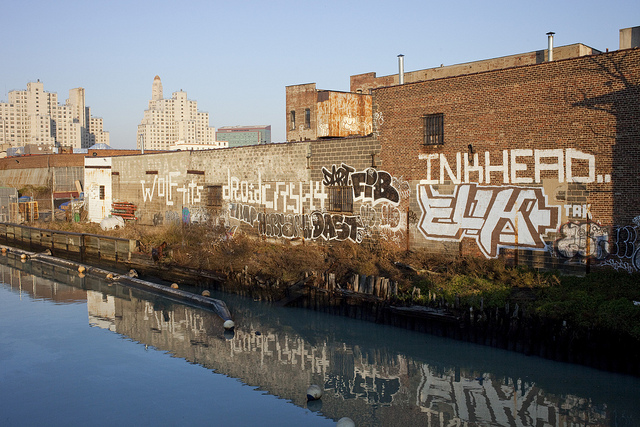
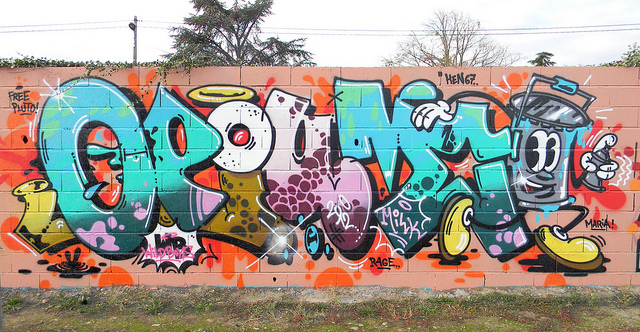

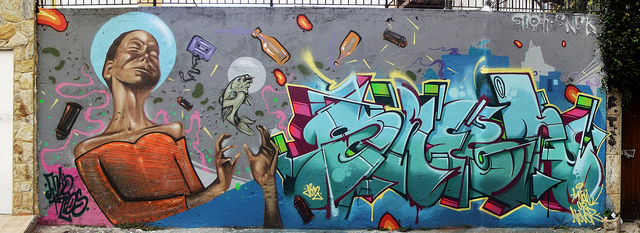


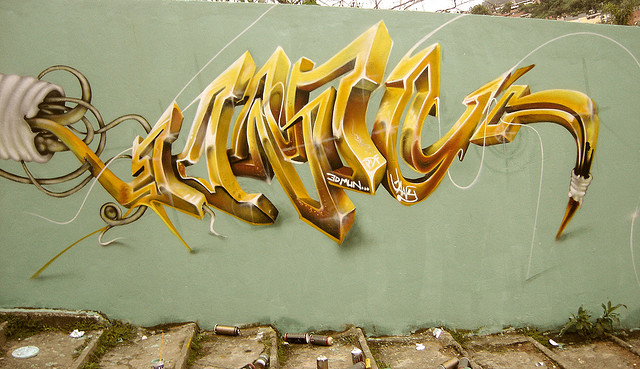
Photos by Cranio, Dezio One, Ed Mun, JakeDobkin, LunaPark, Ripo, Sabeth718, Shock O Maravilha and Zeus40 and Wildboys

Cash4 show opening tomorrow called “Cash For” from 6pm-10pm at Tender Trap (245 South 1st St., Brooklyn, New York 11211).








Photos by Cranio, Dezio One, Ed Mun, JakeDobkin, LunaPark, Ripo, Sabeth718, Shock O Maravilha and Zeus40 and Wildboys

Conrad Benner of Streets Dept. noted that yarn bombing is probably one of the most verbally attacked forms of street art and in my experience, he’s right. Actually, most of the hate I hear comes from other street artists. Why? As Jason Eppink puts it, “Yarn bombing exemplifies the ‘do it for the photo’ method of street art. There’s a disingenuousness. … It’s bright and colorful for a day, then it looks gross and someone else has to clean it up.” And it’s no beautiful decay, like the withering of wheatpastes or chipping paint. Personally, I always feel a bit uncomfortable with the awareness that someone put in a disproportionate amount of hours to make such a short-lived mess. Yarn bombers, why not document your pieces a week after you put them up (or the places where they had formerly been) and tell us if this was made for the audience that would see it physically?
There is a family-friendly quality to yarn bombing that allows these crafters to feel comfortable putting up work in middle of the day in front of observers. It is relatively low-risk. I assume that the association of this with “street art” and “graffiti” has to be frustrating for painters, writers, wheatpasters and sticker artists who wait until the wee hours of the morning to put up work because they risk being charged with a felony. Let’s repeat that: felony. There is a hierarchy of risk in the world of vandalism and street art is already understood as less risky then straight graffiti. Below both of these would be stickering which despite being regarded as toothless in some circles, can still have you arrested in certain cities. Yarn bombing would probably rank so low in terms of risk that it would fall on a separate page. Illegality does not make a work better or worse (though admittedly the risk factor definitely adds interest), but if the playing fields are not equal for yarn bombers and street artists why should they be classified as one and the same?
Here’s the contradiction: I’ve seen yarn used as a street art medium in ways that I thought were extremely imaginative and visually interesting. Works by Moneyless, Spidertag, and HotTea aren’t any less temporary, any less susceptible to decay (perhaps even more so), or any less legally benign than typical yarn bombing. What makes them different for me? The fact that these artists’ works could be identified in a lineup. Part of what has street artists and street art appreciators writing off the genre completely, as Conrad initially asked, is not the medium but the lack of creativity. A plethora of yarn bombers would like their work to be seen as unique or distinct, as any artist would, but are they putting in the effort in to earn that? Let’s look at a few examples of what most people envision when they envision yarn bombing

And here are the yarn-wielding street artists previously named.
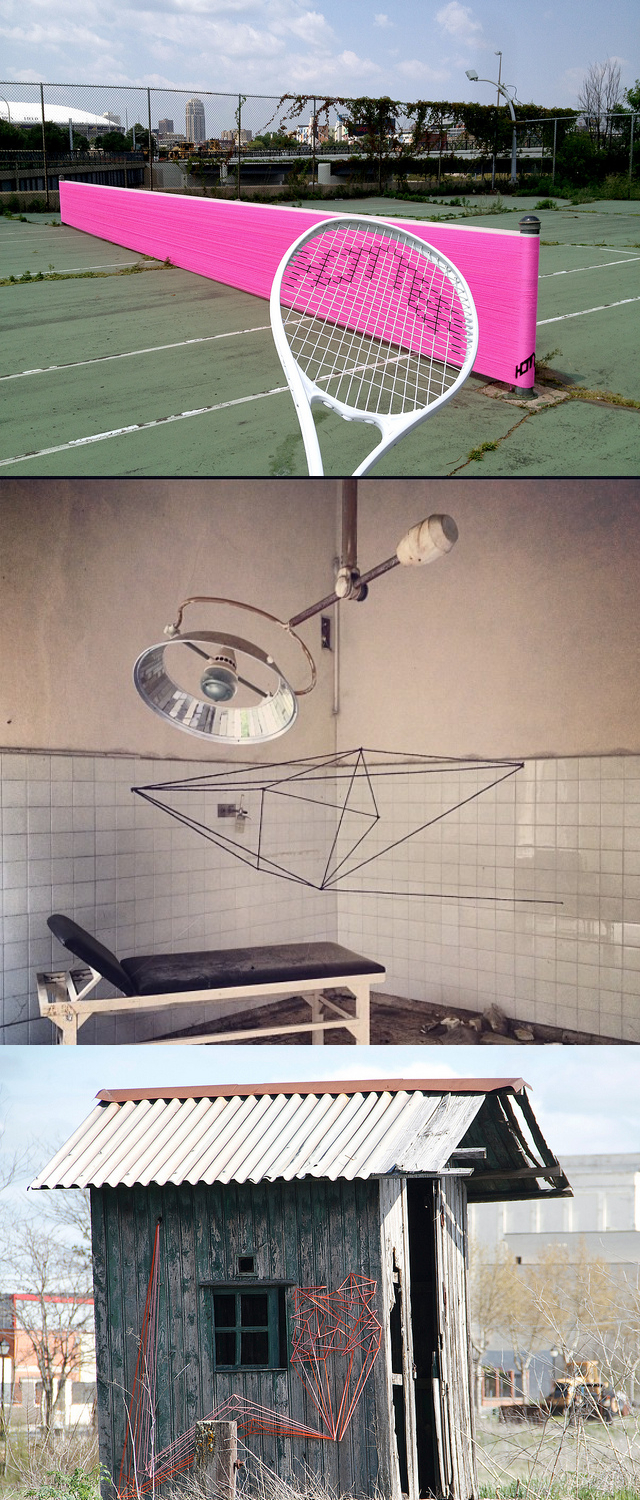
Point made or need we look further?
Olek had always been one of these artists whom I’d come across frequently but always skimmed over with a sort of neutral reaction, like “That might be cool if yarn bombing were something that was cool.” Then the other day Jonathan LeVine Gallery sent me this video compilation of Olek’s work over the past year. Through the entire video, I was trying to reconcile why I still hate yarn bombing but why Olek was starting to feel like an exception. The reason is that she has moved beyond many of the drawbacks of typical yarn bombing. She has a relatively large body of work and it is not built solely on sweatering trees in different cities. The sheer size of some of her pieces are enough to make even biased observers do a double-take. Olek’s work does not last longer or decay prettier, but like Hot Tea, Moneyless and Spidertag, her personal style is identifiable. Unlike usual yarn bombs which don’t seem to be communicating anything specific, Olek’s work is often blatantly addressing the greater art community. Naturally, I don’t like everything but the versatility in Olek’s work proves that there is colossal room for creativity in this genre.
Yarn bombers, I encourage you to point out any shortcomings in this post, but more importantly I challenge you to be more creative.
Photos by Alona Arobas, amy_b, Hot + Tea, jimmyhere, Moneyless, Robert Couse-Baker, Spidertag and StreetsDept

How are you?

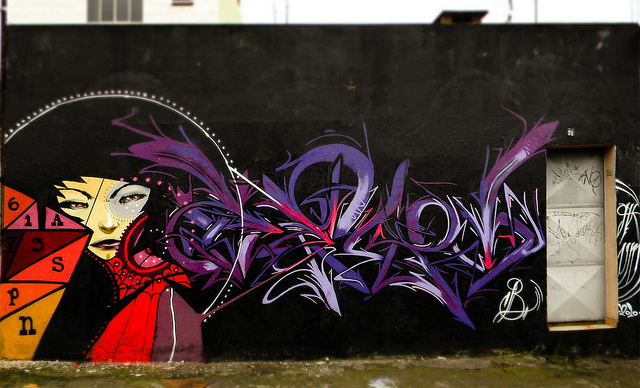

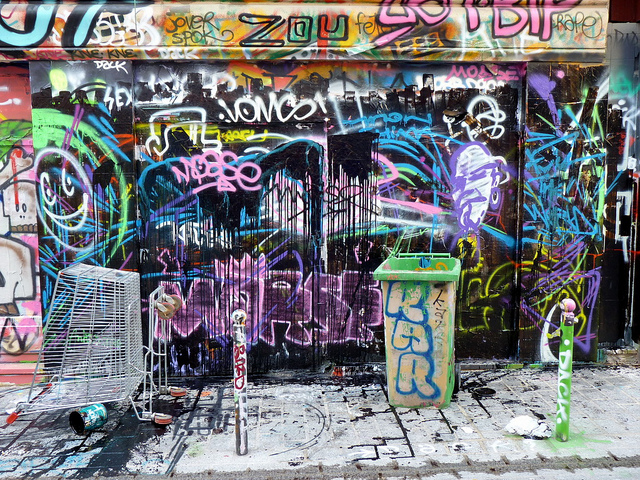
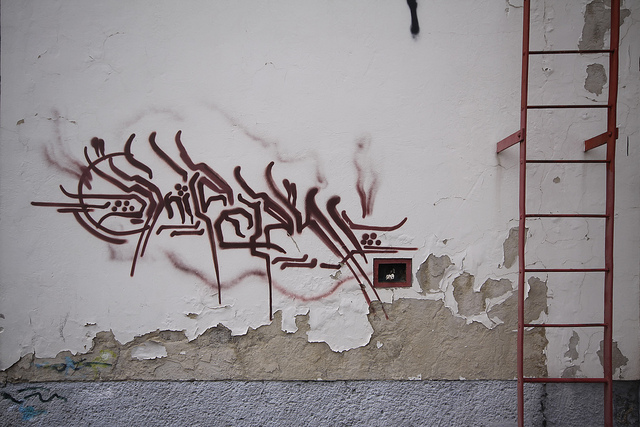
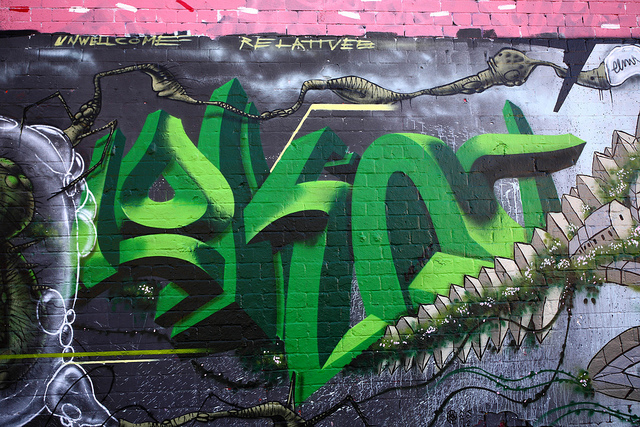

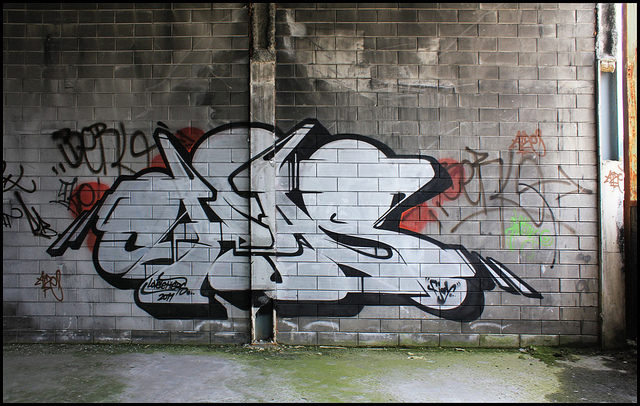

Photos by 4foot2, 16ANDPREGNANT, Herbalizer, ‘N’, photofil, sabeth718, Saner KGB, SOKE, Startape PhotoGraff, and Vitostreet
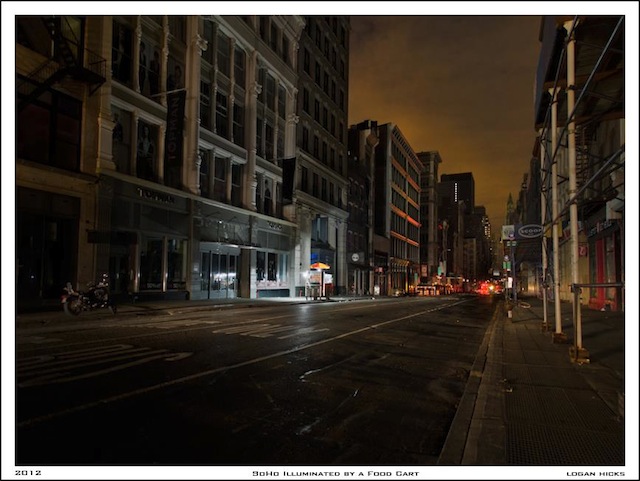
As many of you have either heard or experienced, Hurricane Sandy left a trail of destruction in the Caribbean and along the East Coast of the USA. While some of us in New York were fortunately unscathed, there are some true horror stories coming out of this. Logan Hicks has decided to be proactive and in a benevolent effort will be selling the print “SoHo Illuminated by a food cart” until November 10th to raise funds for the Red Cross. 100% of the profits raised will be donated directly to the Red Cross. This is an opportunity for us to give back and to own nice art for doing so.
Logan’s words:
Hurricane Sandy has destroyed entire towns and families in the tri-state New York area. While my own family and belongings escaped any real damage, many were not as fortunate. As we came through the hurricane, I thought ‘that wasn’t so bad’ – and in my neighborhood, it wasn’t. Then the news channels started to parade the misery of communities like Staten Island and Breezy Point across the screen. They were decimated. Entire houses washed away, lives lost, and cherished possessions destroyed.
My good friend John Lee from @emehtagency made a suggestion that I sell one of the photos taken of downtown Manhattan during the power loss to help raise money for those in need. It sounded like the perfect way for me to assist. The conditions which produced amazing photographs for me were also the same conditions that have displaced families. It’s the obligation of those that have, to help those who do not. So I am helping the way I am best suited for – through my art.
Title: “SoHo Illuminated by a food cart”
Medium: Digital C-print on Metallic paper
Size: 24 x 18 inches (61 x 46 cm) (image size 23 x 17 with quarter inch border)
Signed; Yes
Edition: Open
Price: $100.00 (shipping included)
Limit one print per household.
Payment via Paypal address: logan@workhorsevisuals.com
Prints will ship out around December 1st.
Image courtesy of Logan Hicks
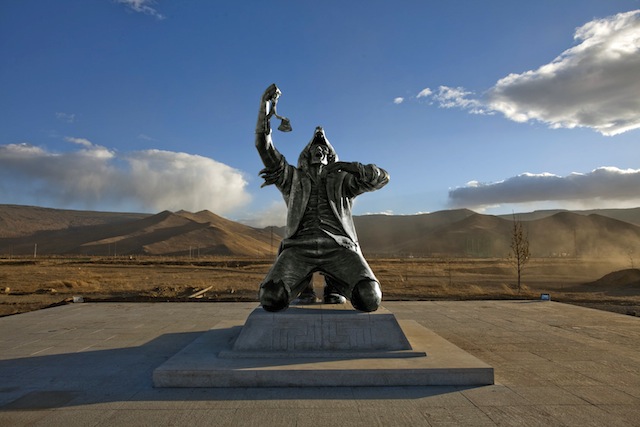
Faile recently returned from a trip to Mongolia sponsored by Tiger Translate, where they unveiled their latest sculptural creation and some street work. Over the past few months, Patrick McNeil and Patrick Miller (aka Faile) have been working closely with Mongolian sculptor Bat Munkh to bring this colossal piece to life in its permanent home. Faile was kind enough to invite me to their studio and talk about their experiences unveiling the sculpture in Mongolia and their thoughts on creating their first permanent piece. – Caroline Caldwell
Patrick Miller: We made this sculpture, which is of an image we did in 2009 called “Eat With the Wolf” and it’s sort of this businessman tearing away a suit, wearing a wolf pelt. He’s placed in their national park, Ulan Bator. Behind the sculpture is this mountain preserve and then he’s looking on to all this new development. So this will all be a grassline, 1600 acre park. It’s wild to have a permanent sculpture in this city.
It’s pretty amazing. It really couldn’t have been a better sort of symbolic thing of what’s happening in Mongolia right now. Basically, they’ve come across all these minerals in mining, copper and gold, and the Russians and the Chinese are descending upon Mongolia to really try and mine the shit out of it. It’s sort like, what’s gonna happen to the city and how will the people actually benefit this? Or will the country just be mined for its resources and kind of left as a shell? So there are a lot of these issues going on there right now, which made this sculpture feel pretty timely.
This image came out of a series we did called “Lost in Glimmering Shadows” and it was sort of imagining if Native Americans had come back to the city today and retaken the land. This image was really about this crisis within of battling between greed and a connection to nature. So we’d been working on this sculpture for awhile on its own with Charlie Becker, who’s a sculptor we work with a lot, and Tiger Translate and the Mongolian Arts Council approached us and asked if we’d be interested in doing a sculpture out there which essentially led to doing that.
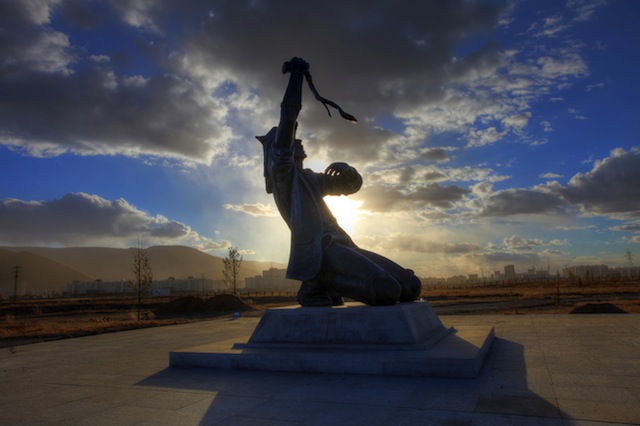
Patrick McNeil: We submitted a couple different ideas and this is the one that the arts council kind of gravitated to because of, I think, the wolf symbolism. We did a couple other things but this one just kind of resonated the best. There were a couple pitches that we did that got lost in translation, or it just didn’t make sense with the Mongolian culture.
It was a really tight timeline too, and we already had this sculpted since we’d been working on a miniature version of this one. So with the timeline and everything, this one seemed to make the most sense to execute in the 3 months that we did it in.
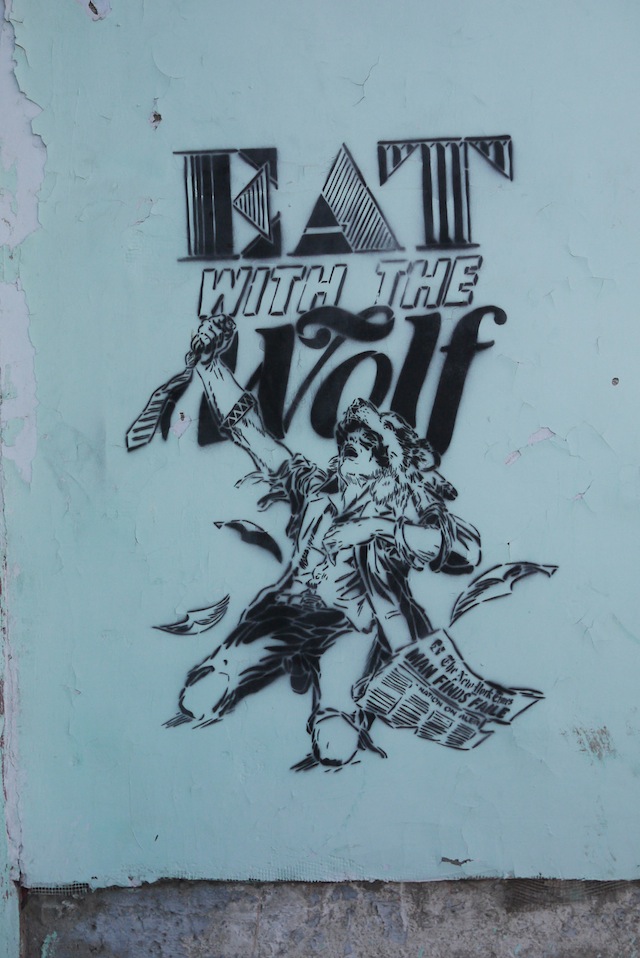
Caroline Caldwell: Do you think the Mongolian people will understand the Native American symbolism or do you think they’ll interpret it within their own culture?
McNeil: You know, if you look at their culture, it’s very similar to a lot of the symbols and things that weave through the Native American culture; with wolf being a power animal and horses, the shamanism, and even just the nomadic lifestyle.
Miller: They actually think that the Native Americans came over from Mongolia and Upper Asia. So yeah, I definitely think they’ll have a strong connection with that idea.
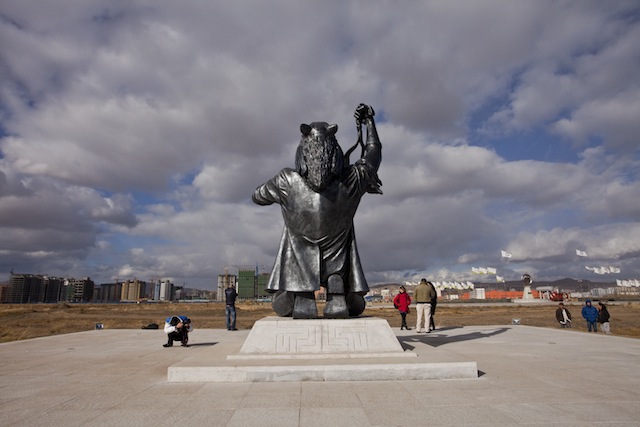
Caldwell: Why did you agree to do this project?
Continue reading “FAILE talks about their new work in Mongolia”

Run it.
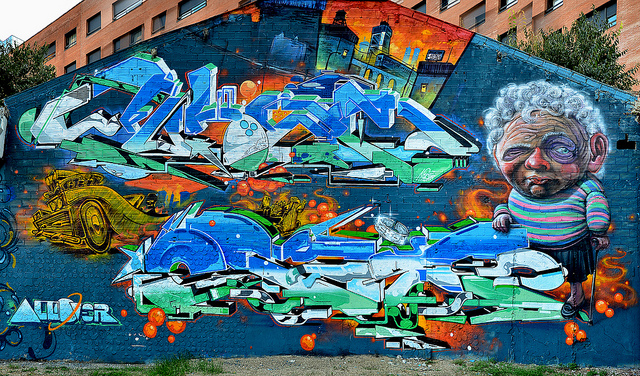
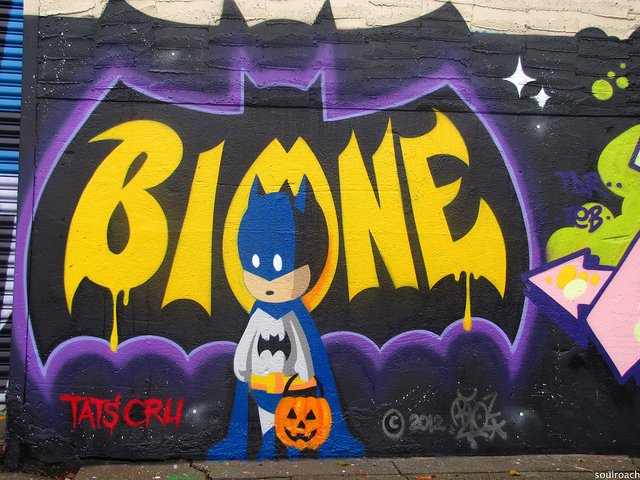




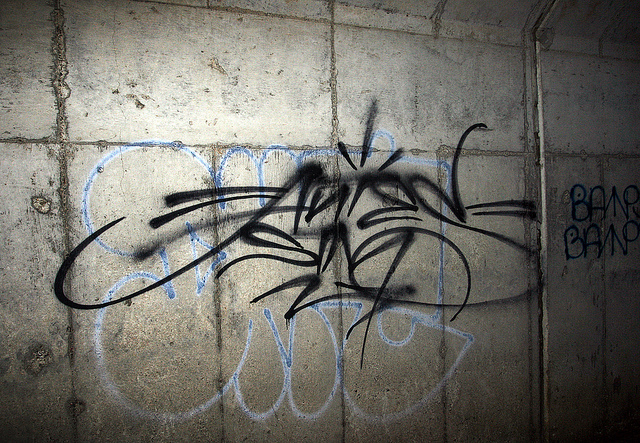
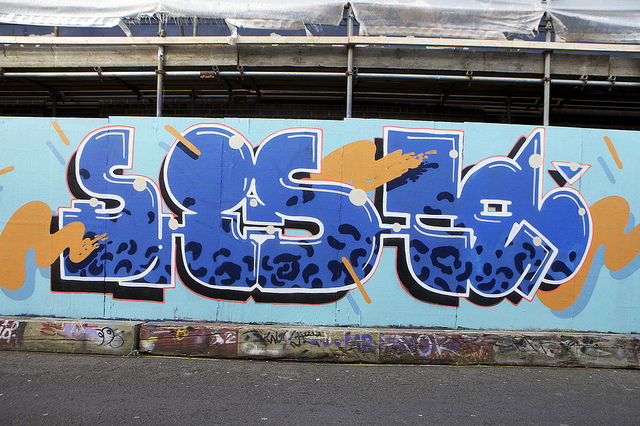

Photos by baddogwhiskas, Datachump, FuckSabcat / HongKong, FunkandJazz, •G•, soulroach, and Startape Photgraff
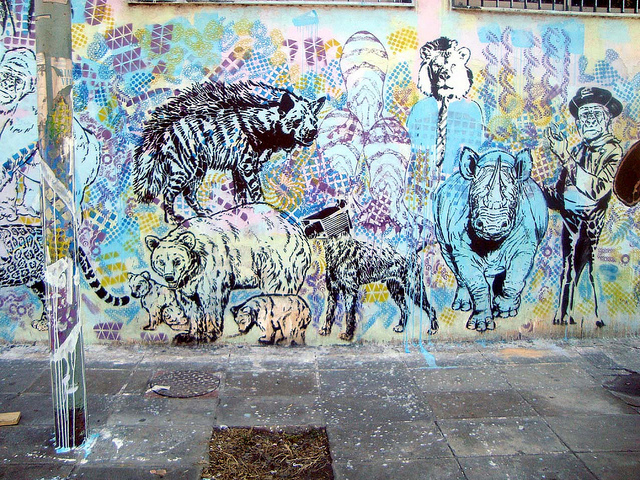
Hailing from Buenos Aires, Run Don’t Walk was formed in 2002 and consists of stencil artist Federico Minuchin and self-taught visual artist Tester. Though we’ve seen them in the Avant-Garde Urbano festival, I was prompted to look into them after reviewing Stencil Republic. Some of their work is not dissimilar from MBW, but RDW seems massively more imaginative, being that their work is pop art that doesn’t rely on buzz icons as a crutch. There’s not a whole lot out there by this collective, but I’m writing this post because I see a lot of potential and would like to see more.
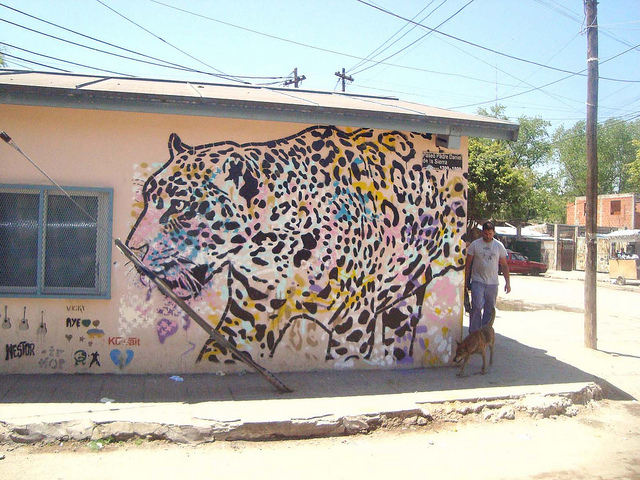


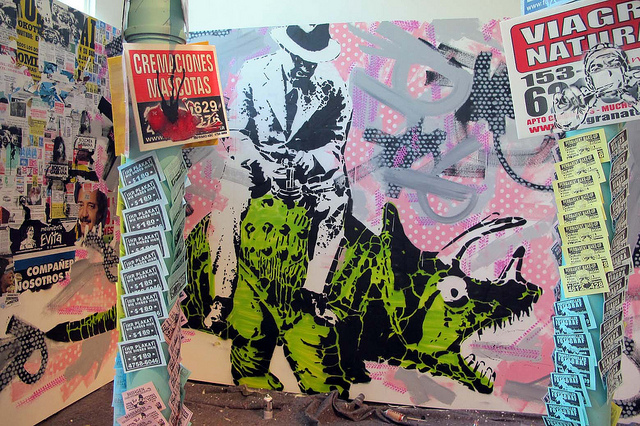


Photos by Run Don’t Walk
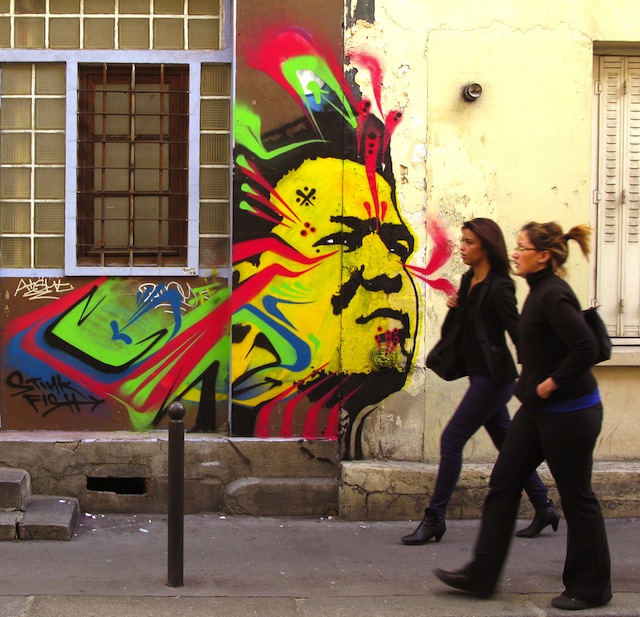
Stinkfish is letting everyone on the streets of Paris know that he’s in town. He’ll be making his way to England soon for his first London solo-show opening at High Roller Society. The show, entitled Espina, opens to the public on the 27th and runs until November 11.
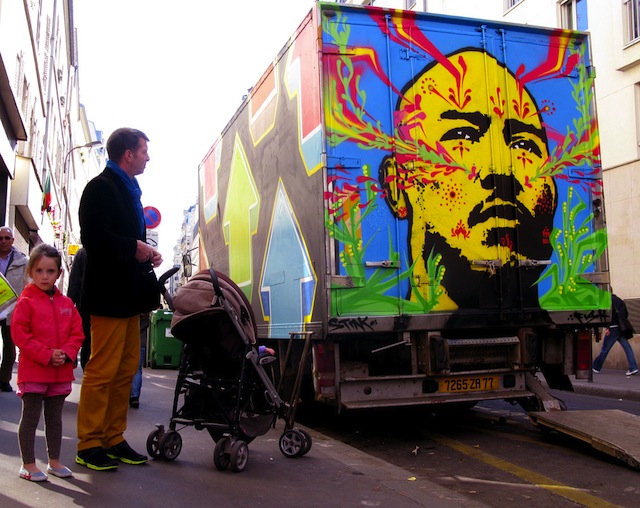

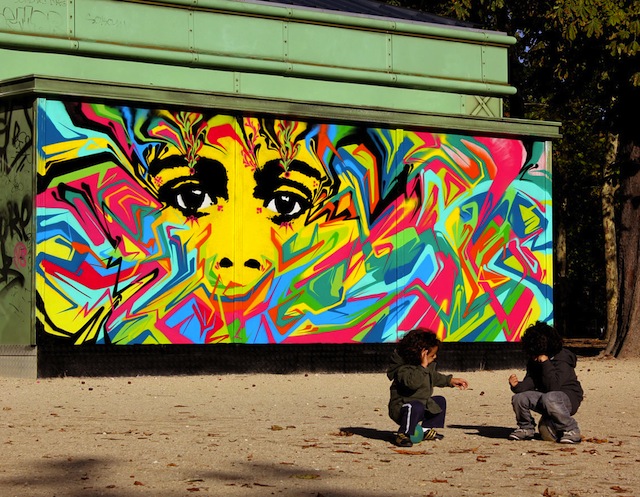
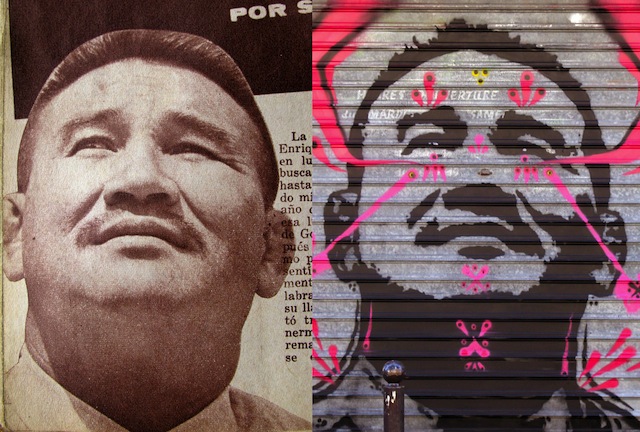

Photos by Stinkfish
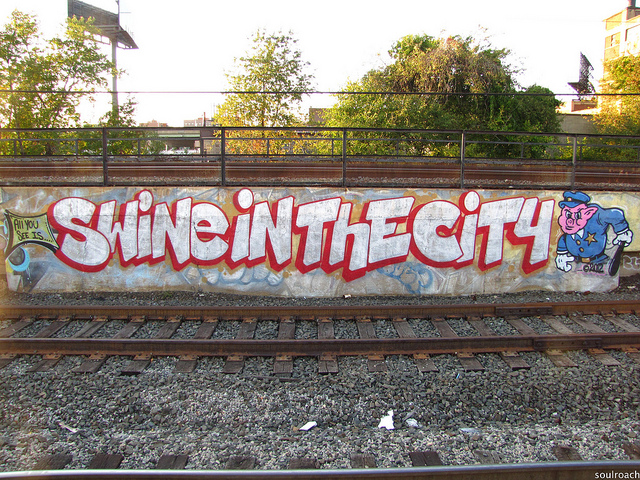
Wild Style throwback!
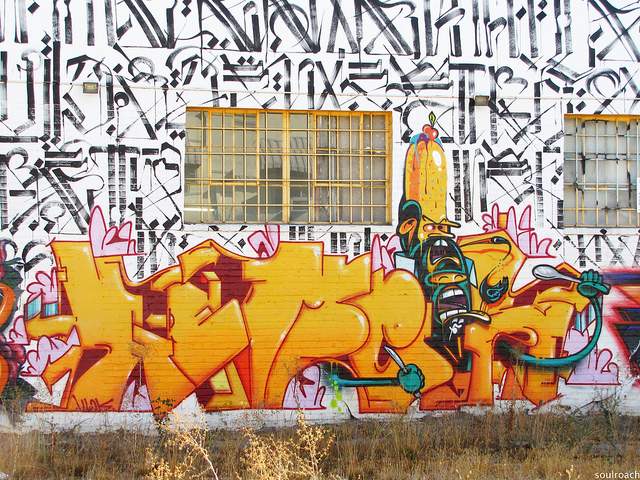
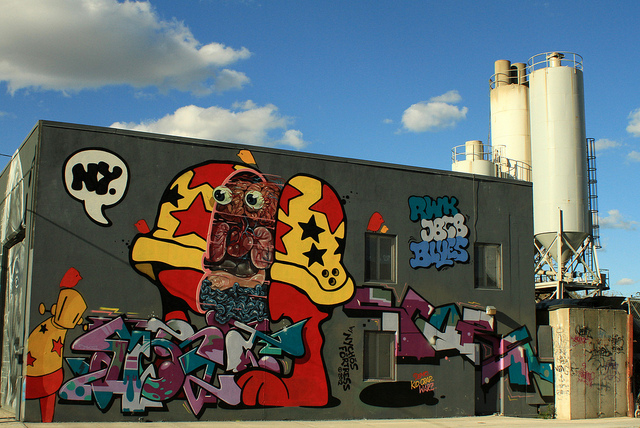

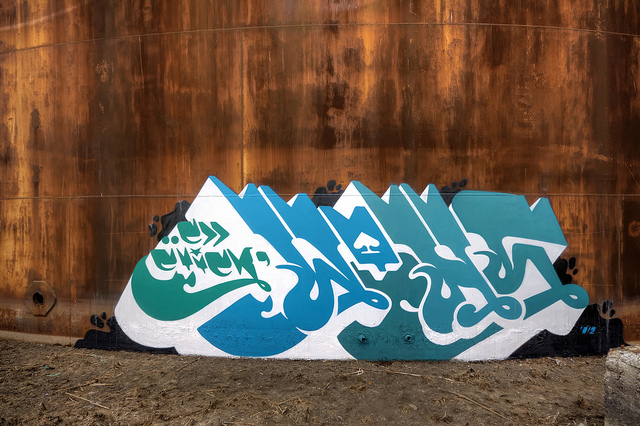
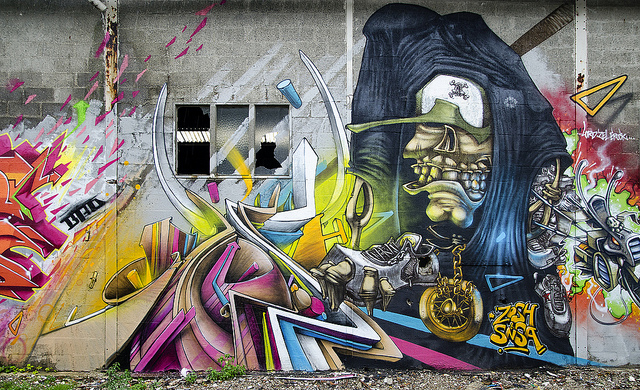

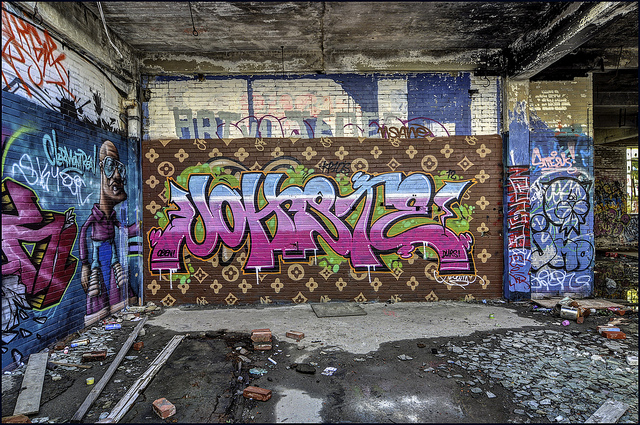

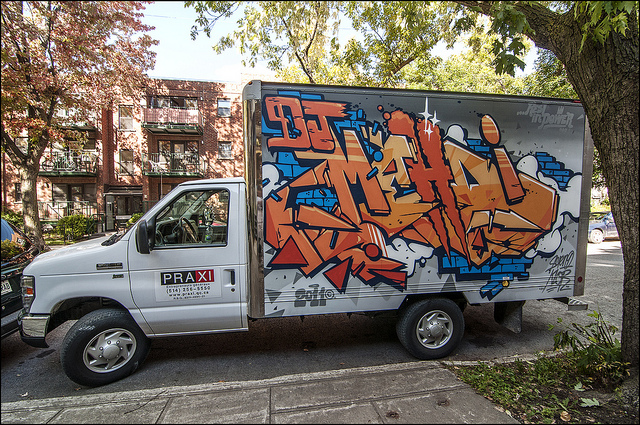
Photos by _DAST_, datachump, Luna Park, Photofil, SoulRoach and Startape Photographe
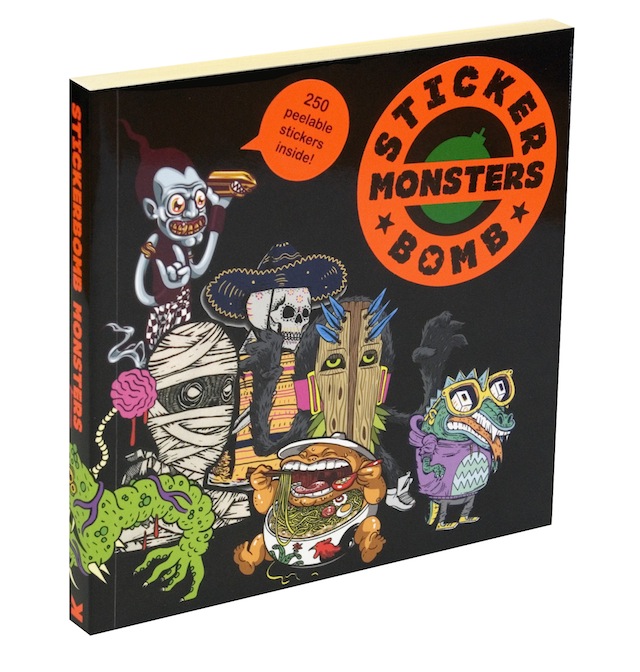
Most of the sticker collectors I know take pride in their collections because they have some sort of personal connection to the individual stickers. The interest is not the stickers themselves, so much as how these collectors obtained them. For Martha Cooper, it means using a secret recipe to weaken the adhesive and collect stickers that were put up illegally on the street. For some collectors, it means going to art shows with a black book and bumping into the right people. For others, like Philadelphia’s family-like network of sticker artists, it means trading stickers between artists to save or frequently to collaborate. For these people, a book of printed stickers lacks the intrinsic value that comes with compiling a collection through unique experiences.
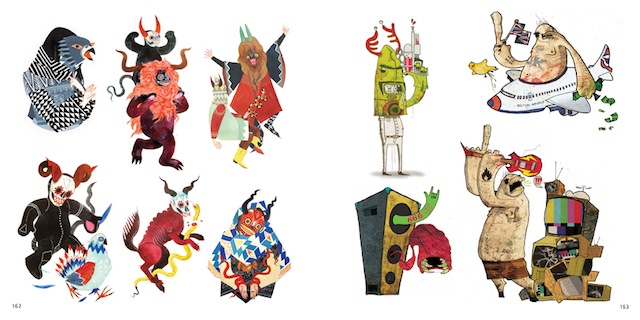
My favorite book (of any book, not just my street art books) is DB Burkeman’s Stickers: Stuck-Up Piece of Crap because it is an encyclopedia of sticker styles and artists. However, when Laurence King Publishing sent me a copy of one of their latest publications, Stickerbomb Monsters, the immediate dissatisfaction I felt forced me to reflect on what exactly makes a sticker collection special. Stickerbomb Monsters is a book of 250 monster-themed stickers designed by a number of current illustrators, street artists, and cartoonists such as Numskull, Sheryo, Iain Burke and others. To an experiential/sentimental sticker collector, this sort of thing might be similar to a printed autograph book. To be fair, there are people who would appreciate that, and to those people, you can purchase Stickerbomb Monsters here.
If you are a sticker collector, does aesthetic take priority over sentiment, or is your collection based off your personal relationships with the stickers?
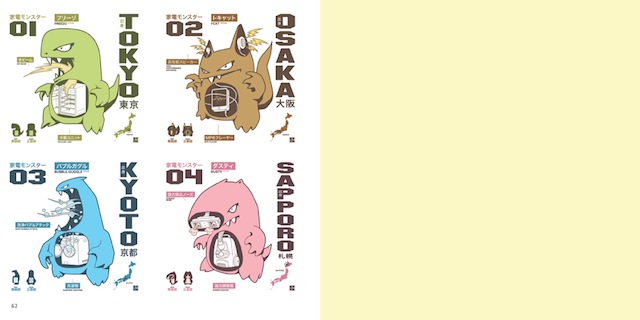
Photos courtesy of Laurence King Publishing